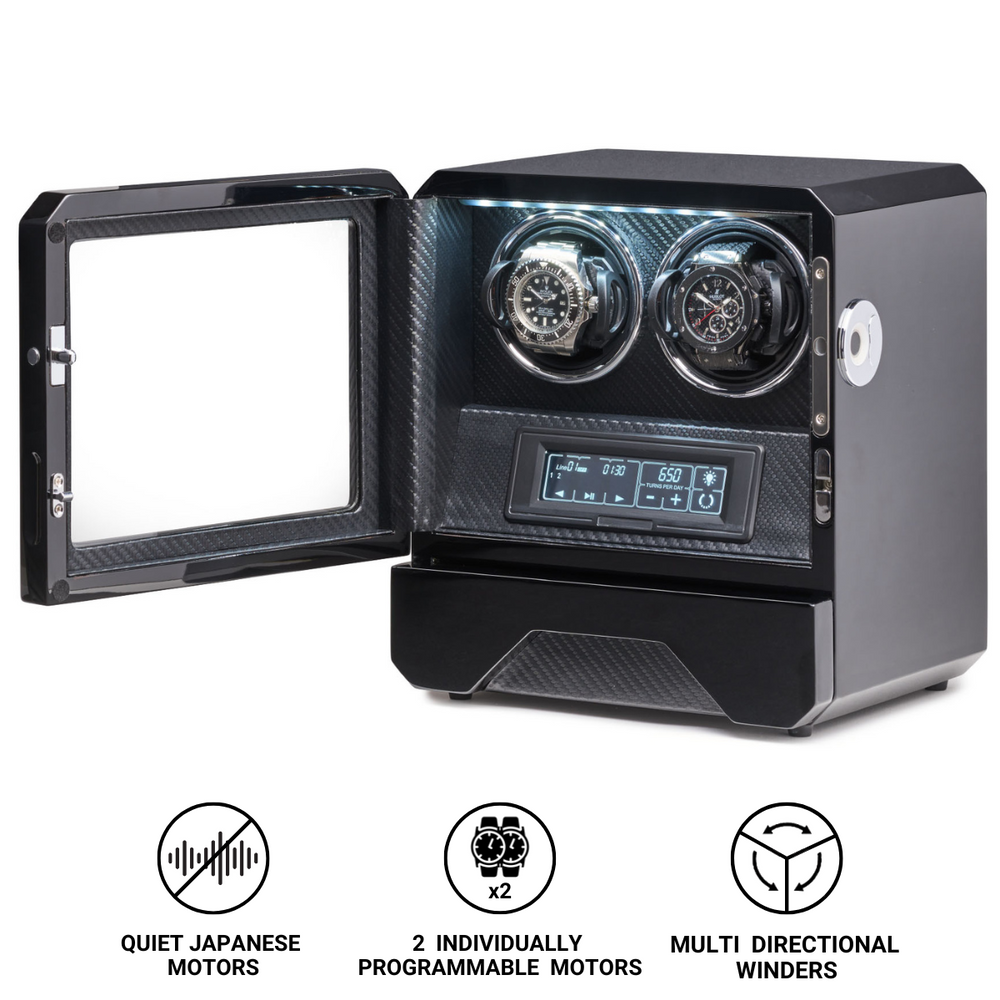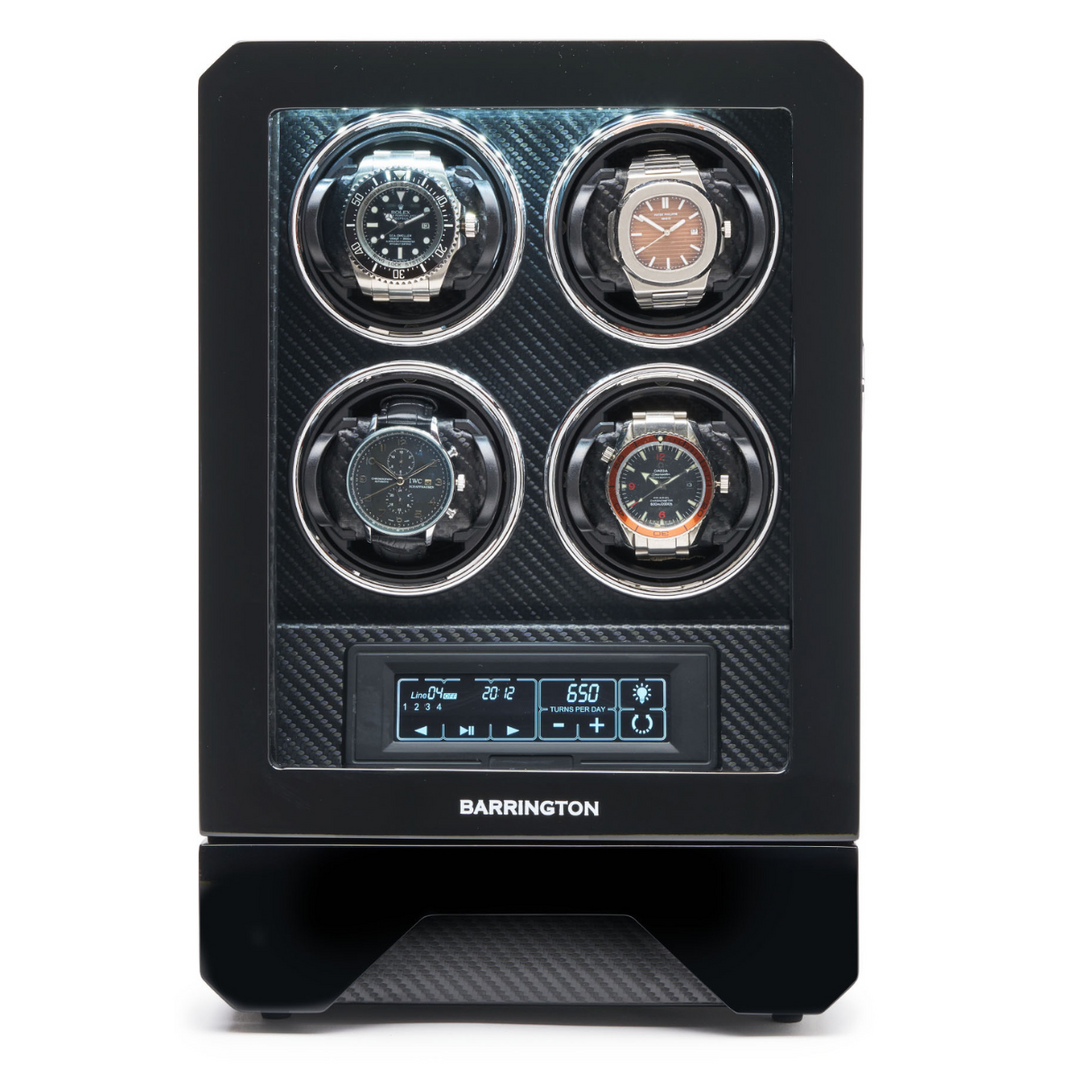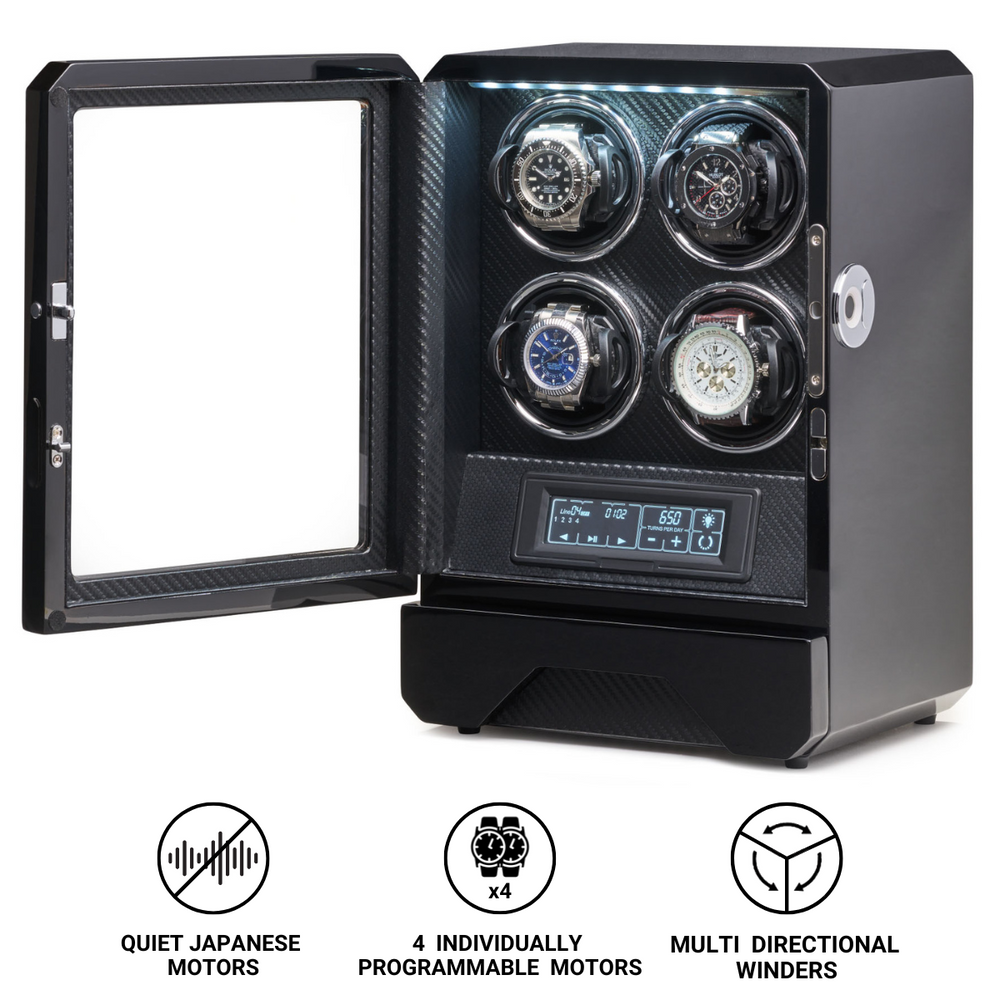What is Flyback Chronograph?
Among the many technical achievements in mechanical watchmaking, the flyback chronograph stands as one of the most ingenious and functionally elegant complications ever created. Distinguished by its ability to reset and restart instantly with a single press of a button, the flyback chronograph transforms the timing process from a multi-step action into one seamless motion. It is a feature that not only simplifies operation but also embodies the pursuit of efficiency and precision that defines fine horology.
Originally conceived for pilots and professionals who required split-second accuracy under pressure, the flyback chronograph remains a symbol of technical mastery and purposeful design. It represents the perfect blend of mechanical ingenuity, usability, and historical heritage, continuing to fascinate collectors and watch enthusiasts alike.
Understanding the Flyback Chronograph
A traditional chronograph functions as a stopwatch integrated into a wristwatch, allowing the wearer to measure elapsed time. In a standard configuration, the user must press the chronograph button three times to time successive events: once to stop, again to reset to zero, and finally a third time to restart the timing.
The flyback chronograph eliminates this sequence by allowing the timing hand to be reset and immediately restarted with a single press of the reset button. The name “flyback” comes from the movement of the central chronograph seconds hand, which instantly “flies back” to zero and begins counting again without delay.
This mechanism is particularly valuable when timing consecutive intervals or manoeuvres, where every fraction of a second counts. In aviation, for example, a pilot could quickly time one flight leg after another without having to stop and reset the chronograph manually.
The History and Origins of the Flyback Chronograph
The origins of the flyback chronograph date back to the early 20th century, a period of rapid advancement in mechanical watchmaking and growing demand for precision instruments. Pilots, navigators, and engineers required reliable timekeeping tools that could record multiple intervals quickly and accurately.
The first known patent for a flyback chronograph was filed in 1936 by Longines, a brand renowned for its technical innovations in the field of chronographs. Their design allowed the chronograph hand to be reset and restarted with a single pusher, dramatically improving efficiency for aviators. The Longines 13ZN movement, introduced shortly thereafter, became a landmark in watchmaking history as one of the earliest flyback chronograph calibres.
During the 1930s and 1940s, the flyback function became closely associated with aviation. Military and commercial pilots alike used chronographs for navigation, fuel calculations, and flight timing. The ability to reset the chronograph instantaneously without losing focus or precision offered a distinct advantage in demanding conditions.
Over the following decades, other prestigious brands adopted and refined the flyback mechanism, including Breguet, Blancpain, Breitling, and Patek Philippe. Each manufacturer contributed subtle variations and improvements, ensuring the flyback chronograph’s continued relevance in both technical and aesthetic terms.
How the Flyback Chronograph Works
At its core, the flyback chronograph is an evolution of the standard chronograph mechanism. Both rely on a system of gears, levers, and a clutch that engage and disengage the chronograph hand from the main gear train. The difference lies in the integration of an additional reset function within the flyback system.
In a traditional chronograph, pressing the reset button while the chronograph is running would damage the movement, as the gears are still engaged. The flyback mechanism overcomes this limitation through a sophisticated arrangement that momentarily disengages the chronograph wheel before resetting.
When the flyback pusher is pressed, the following sequence occurs:
-
The coupling clutch disengages the chronograph seconds wheel from the movement, isolating it from the main train.
-
A hammer mechanism instantly returns the chronograph seconds and minute counters to zero.
-
The clutch immediately re-engages, allowing the chronograph to resume timing without interruption.
This entire operation occurs in a fraction of a second. The mechanical precision required to achieve such synchronised movement is extraordinary, demanding exact tolerances and expert craftsmanship.
Applications in Aviation and Beyond
The flyback chronograph was originally designed to meet the needs of aviators who required absolute timing precision during flight operations. Pilots often relied on watches to measure fuel consumption, navigation points, and course adjustments. The traditional chronograph’s multi-step operation could be cumbersome and distracting during these critical tasks.
With a flyback chronograph, a single press allowed them to reset and start a new timing sequence instantly, making it ideal for timing successive flight legs or manoeuvres. This efficiency translated into greater accuracy and safety during long or complex missions.
As the technology evolved, the flyback chronograph found new applications in various fields requiring continuous measurement and timing precision. It became a valuable tool for engineers, scientists, and sports professionals who needed to record sequential events without delay.
Even outside its functional context, the flyback complication has become a hallmark of refined watchmaking. It exemplifies the craftsmanship and innovation that define haute horlogerie, making it a prized feature among collectors and enthusiasts.
Technical Complexity and Engineering Challenges
The construction of a flyback chronograph is one of the most demanding tasks in mechanical watchmaking. The mechanism must perform several actions simultaneously with perfect synchronisation, all within a compact and durable movement.
The additional parts required for the flyback function increase the movement’s complexity significantly. This not only makes assembly and adjustment more challenging but also demands extreme precision to ensure reliability and smooth operation.
The key engineering challenges include:
-
Synchronization of Components
The clutch, hammer, and reset mechanisms must operate in perfect harmony. Any misalignment or irregularity could cause uneven resetting or damage to the movement. -
Durability Under Stress
The flyback mechanism experiences greater mechanical stress than a conventional chronograph due to the instant reset and restart motion. Watchmakers must use robust materials and precise tolerances to ensure long-term reliability. -
Energy Management
The instantaneous reset requires an efficient transfer of energy to avoid interruptions or fluctuations in the chronograph’s timing accuracy. Balancing power distribution between the main gear train and the chronograph module is essential.
These challenges explain why flyback chronographs are typically more expensive than their standard counterparts. They require additional engineering expertise, hand-finishing, and rigorous testing to achieve the level of reliability expected from a high-performance timepiece.
Iconic Flyback Chronograph Watches
Throughout history, several models have defined the legacy of the flyback chronograph, combining technical excellence with timeless design.
-
Longines 13ZN and 30CH
As pioneers of the flyback chronograph, Longines remains synonymous with the complication. The 13ZN, introduced in the 1930s, and its successor, the 30CH, are considered milestones in chronograph development. -
Breguet Type XX
Created in the 1950s for the French Air Force, the Breguet Type XX became one of the most iconic military chronographs ever made. Its flyback function allowed pilots to measure sequential flight operations with unmatched efficiency. -
Blancpain Air Command
Designed for aviators, the Air Command series showcased Blancpain’s mastery of the flyback mechanism, combining technical sophistication with rugged durability. -
IWC Pilot’s Watch Chronograph
IWC has incorporated the flyback function into several of its pilot models, reinforcing its heritage as a tool watch for professionals. -
Patek Philippe Reference 5960
A modern example of haute horlogerie, this model combines an annual calendar with a flyback chronograph, demonstrating the complication’s versatility in luxury timepieces.
These watches exemplify how the flyback chronograph bridges utility and artistry, maintaining its relevance across decades of technological progress.
The Flyback Chronograph in Contemporary Watchmaking
In today’s era of precision engineering and digital technology, the flyback chronograph continues to hold a special place in mechanical horology. It is celebrated not only for its functional value but also for the craftsmanship and heritage it represents.
Modern flyback chronographs benefit from advanced materials and manufacturing techniques that enhance performance and durability. Silicon components, improved lubricants, and computer-aided design have allowed watchmakers to refine the flyback mechanism to near-perfection.
Contemporary brands such as Zenith, Omega, TAG Heuer, and Panerai have embraced the flyback complication, integrating it into both classic and sport-oriented models. While the underlying principle remains the same, these modern interpretations reflect the fusion of tradition and innovation that defines modern watchmaking.
The flyback chronograph also appeals to a new generation of enthusiasts who appreciate the mechanical artistry and tactile experience of traditional timekeeping. The crisp, immediate response of the flyback mechanism offers a sensory connection to the watch that no digital alternative can replicate.
The Symbolism of the Flyback Chronograph
Beyond its technical brilliance, the flyback chronograph carries symbolic meaning. It represents mastery over time, precision under pressure, and the human desire to simplify complex actions without sacrificing accuracy.
The ability to reset and restart in one motion reflects a deeper philosophy of progress and renewal—qualities that resonate with both pilots and watch enthusiasts. It is a reminder that innovation in horology is not only about adding more complications but refining them to achieve elegance through efficiency.
Conclusion
The flyback chronograph stands as a testament to the ingenuity and artistry of mechanical watchmaking. Born from the practical needs of aviators, it has transcended its utilitarian origins to become a symbol of precision, performance, and sophistication.
Its single-button reset and restart function encapsulate the essence of mechanical refinement, where engineering excellence meets aesthetic grace. From pioneering models like the Longines 13ZN to modern masterpieces by Breguet and Patek Philippe, the flyback chronograph continues to inspire admiration among collectors and connoisseurs alike.
In a world driven by digital precision, the flyback chronograph endures as a celebration of human craftsmanship and mechanical poetry—a reminder that even in the measurement of time, beauty often lies in the simplest motion.









